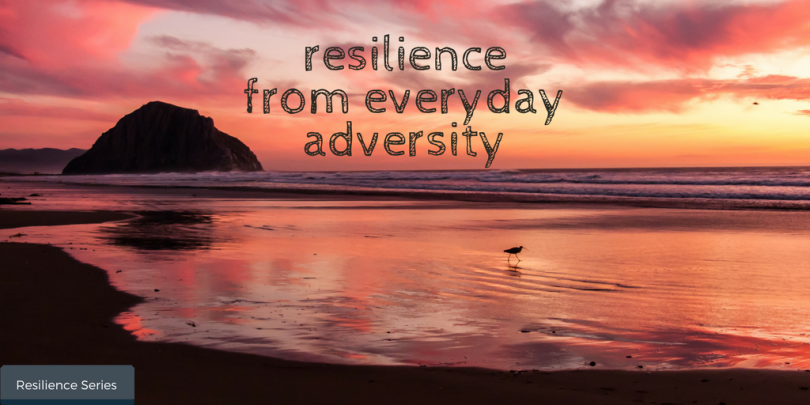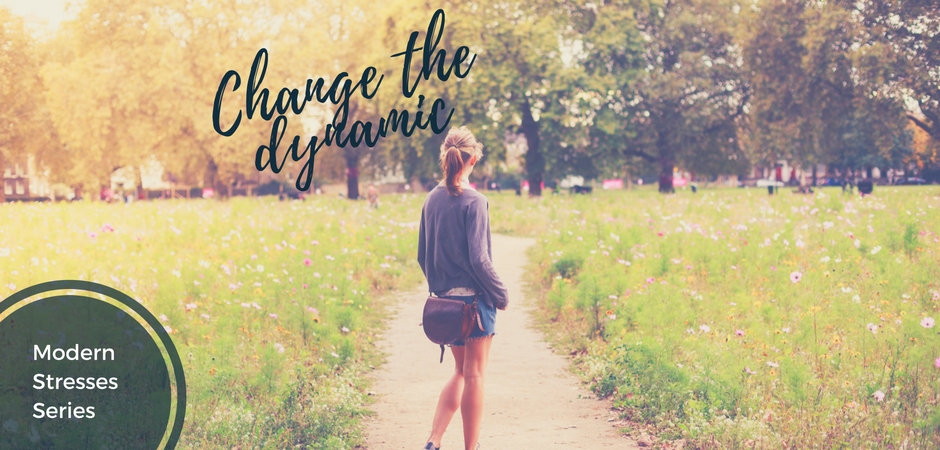
Zoe Foster, Coach, Counsellor & Psychotherapist
Why would a business be interested in resilience? It sounds like something for the individual to manage, right? Between 2015 and 2016, the UK workplace lost some 11.7 million working days to stress, anxiety and depression (HSE, 2016). In 2012, 84% of UK GPs reported that the greatest upward trend in appointments were issues attributed to stress and anxiety (Aviva, 2013). The same survey showed that 85% of GPs felt employers could do more to help staff returning to work. 75% of GPs felt that employers could do more to contribute to employees staying healthy.
Apart from the obvious cost implication of lost working days, to both company and individual, so much more is at stake. Imagine that an organisation is a building that needs to withstand the impacts of time, weather, subsidence, corrosion and many other factors. To have a strong building, the foundations need to be solid. A successful, competitive company works on a foundation made from its employees. If they are resilient, then the building is strong. If not, the walls may start to crumble. If the walls move, windows can crack, the roof is compromised. The domino effect of lowered resilience can be wide-reaching; business performance, client loyalty, partner relationships, flexibility in the marketplace are all examples of things that can be impacted one way or another. Building personal and organisational resilience is becoming recognised as a joint effort between employee and employer.
Every aspect of our work and home lives will influence our resilience levels. Workplace culture is rich and often very different from anything we experience outside of that environment. Each company we work for varies in culture and values. We connect with people that we perhaps would not come across in our private lives. Organisational hierarchies create in themselves an interesting dynamic between individuals and wider teams. How we interact with someone at work could be completely different to how we interact at home. Additionally, markets move, economies are challenged and change is assured. These challenges and changes come with their own special stresses.
Most stress is, in fact, good for you. It creates a temporary adrenaline rush in order to get that deal closed or a deadline met. Bad stress is likely to be more continuous in nature and can start to cause other problems. Perhaps a self-defeating response – like avoiding a piece of work you can’t get your head around until it has to be rushed. Sometimes bad stress can lead to other health issues and ultimately a trip to the GP.
The Health and Safety Executive (2016) has outlined the top six sources of negative stress in the workplace:
- Demands – Workload, work patterns, work environment
- Control – Having too little say about the way you do your work
- Support – Inadequate support: Organisation, line manager(s), colleagues
- Relationships – Conflict, malignant behaviours such as bullying or harassment
- Role – Lack of clarity about your role, conflicting roles, wrong role
- Change – Poorly managed, communication of
The final point above is interesting, change is a given for life, especially in the workplace. How change is managed in an organisation through employees is paramount during times of flux. These individuals can positively or negatively affect the ongoing performance of a business and the impact on clients. Clarity, or lack of, is a theme that runs through most of the points outlined by HSE and one I hear from clients often as a source of stress. We can argue that as grown-ups, in an ideal world, we can manage these issues in order to affect a resolution. However, it is not always possible to do this. As an employee, how do we manage our resilience to such challenges? How can an organisation help build such resilience in order that ‘breakages’ are not being handled after the fact?
Youseff & Luthans (2007) suggest there are three components that make up something called Positive Organisational Behaviour (POB). These are hope, optimism and resilience. Hope is defined as an agency of willpower, having a direct impact on personal performance. For this element to succeed an organisation needs to maintain focus on ‘regoaling’ to avoid false hope, building in contingencies and setting stretch targets where appropriate. To regoal is to have flexibility in adjusting employee commitments during times of change. Optimism considers positive events as personal, permanent and pervasive. That negative events are seen as external, temporary and situation specific. In conflict to this, pessimism creates an undermining factor exaggerating and personalising losses and failures. The third component, resilience, is the subject we are focussed on in this article. Youseff & Luthans define this component as a ‘developable capacity to rebound or bounce back from adversity, conflict and failure or even positive events, progress and increased responsibility’. They consider two aspects of resilience. The reactive response of a negative event impacting on the individual. Therein the time, energy and resource required in order to rebound as well as to absorb learning and meaning. The second utilises a proactive approach. An individual utilises and develops their self-awareness to assess ‘setbacks’ and learning opportunities. These are then used as a catalyst to develop flexibility, improve improvisation and in turn further build on their self-awareness.
Resilience is a style of development that lends itself to the unexpected situations we meet every day. Much as we build a strategy for ourselves, our team or organisation, there will always be something we cannot account for. A ‘resilience culture’ is something that can become part of the psyche of the individual and the team. By doing so it feeds into the strength of the organisation and can pervade its overall culture.
Some of the resilience work can be done through the use of 1-1’s, coaching or counselling. It can be done in a facilitated team environment or on a broader social platform. The work can include reflection, personal assessment and self-awareness. Role-play with trusted others is a good way to test new approaches. Most important to the process is understanding how to self-care. This is not a fluffy nice to have, it’s preventative and should include a practical set of actions. The self-care concept for a working environment builds on a basic premise; in order to support others, you first need to understand how to support yourself.
The National Mental Health Commission and the Mentally Healthy Workplace Alliance released a report ‘Creating Mentally Healthy Workplaces’ (2014) proposed ways to improve mental health in the workplace. It recommended the following strategies:
- Smarter work design (Creating working flexibility and involvement in decision making)
- Build better work cultures (Mental health awareness, providing a safe climate, zero tolerance regarding bullying and discrimination and manage change inclusively)
- Build resilience (Resilience and stress management training, coaching, mentoring, and physical activity programs)
- Early intervention (Promote culture of seeking help early, well-being checks, mental health training, peer support programs and access to Employee Assistance Programs (EAPs))
- Support recovery (Training for leaders in supporting return to work, facilitation of flexible arrangements, modification of role & schedules, open door on discrimination against those with historical illness)
- Increase awareness (Access to mental health resources, awareness programs including integration into induction programs)
When I started to look at resilience in the workplace, I created a mind-map to structure the subjects that may impact the ‘resilience culture’. This one in particular seemed to go on forever and then the obvious occurred to me. The mind map shows how the situations we encounter are endless. Therefore, the opportunities for understanding ourselves and our workplace resilience are endless. This doesn’t mean it’s an insurmountable problem. Instead, it shows that our mindset needs to be one of believing the learning curve never ends. Whatever position you hold, whatever skill and experience you have, you can always work on your resilience and learn from those difficult periods. If you are a mind map geek like me, I have included the ‘Resilience in the Modern Workplace’ mind map at the end of this article.
Here’s a final stat to keep you thinking about the value of building ‘resilience culture’. According to a report released by the Department of Health, the Personal Social Services Research Unit (PSSRU), the Centre for the Economics of Mental Health and Centre for Mental Health (2010) – Businesses save £10 for every £1 they spend on workplace mental health education and promotion programmes.
Globalisation and slowing economies have led to considerable changes in business models and quite rightly, a strong focus on cost. But we also know that there is a direct correlation between higher performing businesses and employees who show behavioural loyalty. So, then the question becomes how does a business strike the right balance between managing baseline cost and not incurring unnecessary impact to the organisation’s population and resulting performance?
If you want to find out more about resilience, the ‘resilience culture’ and resilience training, then please call me on 07764 667249.
www.thefosterpractice.co.uk
Other articles in the Resilience Series:
Resilience from Everyday Adversity
Perception of Resilience
NOTE: I should stress that Resilience is a relatively new line of thought being researched by various bodies relative to other theories. What I discuss here is from my observations as well as drawing on emerging research and reports. Such progressing evidence is likely to continue to develop over time and I’m sure we will be revisiting this subject as new research is published.
References
The Aviva Health of the Nation Index – February 2013 [Online] Available from: https://www.slideshare.net/Avivaplc/avivas-health-of-the-nation-report
HSE – Health and Safety Executive: Work related stress, anxiety and depression statistics in Great Britain 2016 [Online] Available from: http://www.hse.gov.uk/statistics/causdis/stress/
HSE – Health and Safety Executive: What are the Management Standard for work related stress? [Online] Available from: http://www.hse.gov.uk/stress/standards/index.htm
Youssef, C. M. Luthans, F. (2007) Positive Organisational Behavior in the Workplace: The Impact of Hope, Optimism, and Resilience. Management Department Faculty Publications. Paper 36. University of Nebraska – Lincoln
Harvey, S B. Joyce, S. Tan, L. Johnson, A. Nguyen, H. Modini, M, Groth, M (2014) Developing a mentally healthy workplace: A review of the literature [Online] Available from: https://www.headsup.org.au/docs/default-source/resources/developing-a-mentally-healthy-workplace_final-november-2014.pdf?sfvrsn=8
Mental Health Commission: Creating Mentally Healthy Workpaces – A Review of the Research [Online] Available from: http://www.mentalhealthcommission.gov.au/media/116332/Creating%20Mentally%20Health%20Workplaces%20-%20A%20review%20of%20the%20research.pdf
Department of Health, the Personal Social Services Research Unit (PSSRU) at the LSE, the Centre for the Economics of Mental Health and Centre for Mental Health – Mental Health Promotion and Mental Illness Prevention: The Economic Case [Online] Available from: http://www.lse.ac.uk/website-archive/newsAndMedia/newsArchives/2011/04/Department_of_Health.aspx




 Zoe Foster, The Foster Practice)
Zoe Foster, The Foster Practice)






